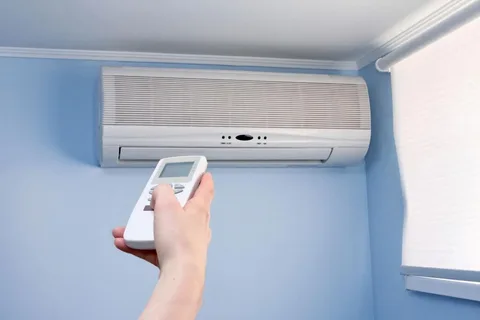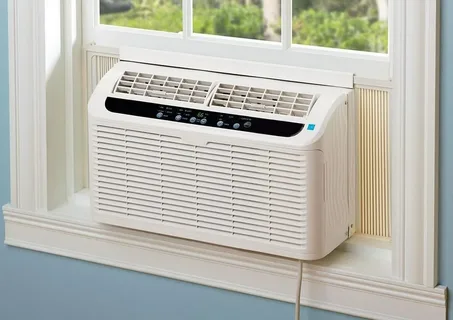In today’s modern world, where climate change is a pressing issue, the importance of HRV-Air Conditioning cannot be overstated. HRV-Air Conditioning systems provide energy efficiency and comfort and play a crucial role in improving indoor air quality. Technological advancements can tailor these systems to different climates and integrate with smart home technology. HRV Air Conditioning maintains a comfortable temperature indoors and improves indoor air quality by providing adequate ventilation, reducing indoor pollutants. Its significant role in promoting a healthier living environment cannot be understated.
Energy Efficiency and Comfort
HRV-Air Conditioning systems are at the forefront of merging energy efficiency with unparalleled comfort for homes and commercial spaces. These innovative systems harness heat recovery technology, which plays a pivotal role in significantly cutting down energy usage, contributing to substantial savings on utility expenses.
The underlying principle of heat recovery allows these systems to capture warmth from exhausted indoor air and repurpose it, ensuring that no energy goes to waste. This mechanism fosters an eco-friendly approach to heating and Cooling and guarantees a stable and pleasant indoor climate all year round.
Moreover, the adaptability of HRV-Air Conditioning systems ensures that the indoor atmosphere remains consistent, free from the fluctuations commonly experienced with traditional HVAC units. This stability is crucial in regions where temperatures can dramatically change, offering residents and workers a refuge that maintains a steady, comfortable environment regardless of external weather conditions.
Improving Indoor Air Quality with HRV and Air Conditioning
HRV and Air Conditioning systems emerge as champions in enhancing the air quality we breathe indoors, an increasingly crucial aspect of our health and well-being. By ingeniously swapping stale, contaminated indoor air with filtered, fresh outdoor air, these systems mitigate indoor pollutants, including dust, allergens, and volatile organic compounds. This exchange process is essential for homes in urban areas or regions prone to high pollen counts, where air quality can significantly impact respiratory health.
Moreover, HRV-Air Conditioning’s ability to control ventilation actively reduces the accumulation of harmful substances by ensuring a constant, controlled flow of air. This is particularly beneficial in tightly sealed buildings where air circulation might otherwise be minimal, trapping pollutants indoors. The system’s integrated filters play a pivotal role in purifying the air, capturing particulates and preventing them from recirculating.
HRV-air conditioning systems distinguish themselves by the strategic balance between air exchange and energy efficiency. While traditional methods of improving indoor air might rely on opening windows, compromising energy efficiency and security, HRV systems ensure that fresh air is continuously introduced without losing heat or cooling, maintaining an optimum indoor environment.
HRV Heating and Cooling
HRV Heating and Cooling systems showcase an advanced approach to managing indoor climates by leveraging the principles of heat recovery ventilation. These systems excel in delivering year-round comfort, using energy from the indoor air that would typically be exhausted outside to precondition the incoming fresh air. During colder months, the HRV system captures the heat from outgoing air to warm up the cooler air being drawn into the home.
This process minimizes the reliance on traditional heating methods, conserving energy and reducing heating costs. Conversely, in the warmer seasons, the system cools indoor spaces by expelling warm indoor air and replacing it with cooler, fresh air from outside. This operation significantly reduces the need for conventional air conditioning, offering a sustainable alternative that keeps indoor spaces comfortable without the hefty energy footprint associated with traditional cooling methods.
The beauty of HRV heating and Cooling lies in its dual functionality. It adeptly adjusts to seasonal needs, ensuring that indoor environments remain at a consistent and comfortable temperature regardless of the time of year. By efficiently managing both heating and cooling demands with one integrated system, HRV technology simplifies climate control while promoting a greener, more energy-efficient approach to temperature management.
Tailoring HRV Systems to Different Climates
HRV-Air Conditioning systems demonstrate unparalleled adaptability, enabling them to cater to the unique needs of varying climates, optimising comfort and energy use. This bespoke approach ensures that these systems maintain their efficiency and efficacy, whether in the sweltering heat of the tropics or the biting cold of the Arctic. In regions where winters are harsh, the emphasis of HRV systems can be adjusted to prioritize heat retention, capturing the warmth of indoor air before it is expelled and using it to warm incoming cold air.
Conversely, in areas that experience intense summers, the focus shifts to expelling indoor heat and bringing in cooler, dehumidified air from outside, thus providing relief from the heat without the excessive energy consumption typically associated with traditional cooling methods.
The customization extends beyond temperature control. HRV systems can be fine-tuned in humid climates to manage indoor humidity levels more effectively, extracting excess moisture to prevent mould growth and create a more comfortable living environment. Similarly, in dry regions, they can help maintain healthy indoor humidity, adding to the occupants’ comfort and well-being.
The Role of Heat Recovery Air Conditioning
Heat recovery air conditioning, a cornerstone of HRV-Air Conditioning systems, exemplifies sustainable heating and cooling solutions innovation. This technology, integral to maintaining energy-efficient and comfortable indoor environments, leverages the thermal energy in the exhaust air to precondition the incoming fresh air. By transferring heat between the outgoing and incoming airstreams, these systems substantially reduce the demand for heating or cooling equipment, thereby slashing energy consumption.
This heat exchange process is remarkably effective in climates that experience extreme seasonal temperatures, where maintaining a consistent indoor environment can otherwise be energy-intensive. It ensures that the energy used to heat or cool the indoor air initially is not wasted but reused to treat incoming air. This cyclical exchange contributes significantly to reducing the carbon footprint of buildings, aligning with global efforts towards environmental sustainability.
In addition to energy savings, the heat recovery mechanism contributes to a healthier indoor atmosphere by facilitating a continuous supply of fresh, filtered air. This is particularly beneficial in tightly sealed spaces, where limited ventilation and air quality can deteriorate. By implementing heat-recovery air conditioning, buildings can achieve an optimal balance of thermal comfort, air quality, and energy efficiency.
Integration with Smart Home Technology
The seamless integration of HRV-air conditioning systems with the latest in smart home technology brings homeowners a new level of control and efficiency. This advanced connectivity allows for the adjustment of climate settings from anywhere, at any time, through the use of smart thermostats and dedicated mobile applications. Users have the power to fine-tune their indoor environment to match their preferences without being physically present, enhancing both convenience and the system’s overall efficiency.
This smart integration goes beyond mere temperature adjustments. It enables real-time monitoring of the home’s indoor air quality, providing insights into when it might be necessary to increase ventilation to reduce indoor pollutants or adjust humidity levels for optimal comfort. Additionally, maintenance alerts can be received directly on a homeowner’s device, ensuring that the system operates at peak efficiency and that any potential issues are addressed promptly.
Homeowners can also leverage smart home technology to set schedules for their HRV-Air Conditioning systems, ensuring that their homes are cooled or heated in the most energy-efficient manner. For instance, the system can be programmed to reduce energy use when the house is empty and to create the perfect indoor climate right before the occupants return.
 Maintaining Proper Humidity Levels
Maintaining Proper Humidity Levels
Achieving the right balance of humidity within indoor environments is not just a matter of comfort but also has significant health implications. HRV-Air Conditioning systems are adept at regulating this crucial aspect of indoor air quality through sophisticated air exchange capabilities. By continually cycling in fresh outdoor air and expelling stale, potentially moisture-laden indoor air, these systems naturally maintain humidity levels within the optimal range.
This process is especially beneficial during the damp, colder months when indoor air can become overly humid, contributing to the growth of mould and mildew. Conversely, in dry conditions, the system’s ability to introduce and circulate fresh, moist air helps to prevent discomfort and health issues associated with overly dry environments, such as irritated skin and respiratory problems.
What sets HRV-Air Conditioning systems apart is their inherent efficiency in managing moisture levels without compromising indoor temperature or energy use. Traditional methods of dehumidifying or humidifying a space often require additional energy consumption and can disrupt the thermal comfort of the indoor environment.
Heat Recovery Ventilation Air Conditioning
Heat Recovery Ventilation Air Conditioning represents a cornerstone in the function and efficiency of HRV-Air Conditioning systems. It distinguishes itself by efficiently recycling thermal energy from outgoing indoor air to precondition the fresh, incoming air. This innovative process significantly diminishes the need for additional heating or cooling power, allowing for a marked reduction in overall energy consumption.
The heat recovery feature is pivotal in maintaining a balanced, comfortable indoor environment without excessively using energy resources. By capitalizing on a building’s existing thermal energy, these systems underscore a commitment to sustainability and resource conservation. Heat recovery ventilation underscores the smart use of technology to address comfort and environmental concerns.
This method provides a continuous supply of fresh air, which is crucial for maintaining a healthy indoor environment while reducing the energy demands typically associated with achieving optimal indoor conditions. This dual advantage highlights the ingenuity behind HRV-Air Conditioning systems, where effective climate control does not necessitate a compromise on energy efficiency or air quality.
FAQS
Q: What Is The Installation Process For HRV Air Conditioning Systems In Existing Homes?
A: Installing HRV-air conditioning systems in existing structures is entirely feasible. The specific process is tailored to each home’s unique layout and architectural features. It typically involves a consultation with HVAC experts who assess the building’s suitability and design an installation plan that minimizes disruption while maximizing system efficiency.
Q: How Do The Operating Costs Of HRV-Air Conditioning Systems Compare To Traditional HVAC Units?
A: HRV-air conditioning systems might initially present a higher upfront cost than standard HVAC systems. However, due to their superior energy efficiency, operational expenses tend to be lower over time. The energy savings achieved through heat recovery and smart technology integration can significantly offset these costs, making HRV systems a financially savvy choice in the long run.
Q: Can HRV-Air Conditioning Systems Provide Both Heating And Cooling?
A: Absolutely. HRV-Air Conditioning systems are adept at providing heating and Cooling to indoor spaces. They utilize heat recovery technology to adjust incoming air temperature cooling it during hot weather and warming it in colder conditions ensuring year-round comfort without excessive energy use.
Conclusion
HRV Air Conditioning systems represent a transformative approach to managing the climates within our living and working spaces. These systems are at the heart of a sustainable future, offering a solution that marries energy conservation with the utmost environmental comfort. They stand as a testament to the power of innovative engineering, enabling us to maintain ideal indoor conditions while prioritizing our planet’s health.
| Other Good Articles to Read |
| Blogs-Peoples |
| Bryan Smith Blogs |
| intellect blogs |
| the fault in our blogs |
| blogs eu |
| oz forums |
| recruitment blogs |
| zet blogs |
| id blogs |
| Blog Studio legale |
| blogs map |
| Related Business Listings |
| Contact Directory |
| Local Business Profiles |
